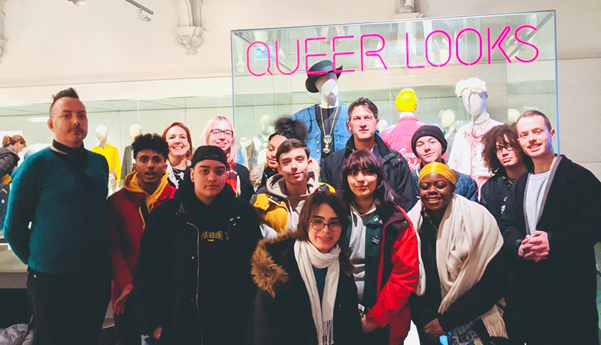Importance of LGBT+ History Month in work with young LGBT+ persons.
At Mosaic LGBT Youth Centre we strive to support, educate and inspire young LGBT+ persons so that they make a prouder, stronger, and more cohesive LGBT community of the future.
Our approach is rooted in social pedagogy and community work. We know that young LGBT+ persons experience high levels of isolation and loneliness, as in 98% of young persons we work with mention it in their first contact with us.
We, therefore, had to think very carefully on how the methodology of our work can make a difference here. Our solution is complex, but the main component of it that I would like to share here today is a focus on history.
LGBT History Month provides a perfect focal point to explore the stories of the past and to apply pressure on institutions to put extra effort into displaying and cherishing our history. Those stories give our young LGBT+ persons insight into the past, reassure them that their struggle has been conquered before and that we have always thrived as a community against all the odds.
There is a common misconception that young LGBT+ persons have it easy now. They do however experience a multitude of challenges including bullying, family rejection, rising hate crime and there is the climate crisis on top of what they already experience as adolescents.
Therefore it is important that history, its heroes, heroines and those that were heroes in non-binary terms are explored, told, and shared. It is our role to make sure that those stories are intersectional, representative of true experiences and presented in a wider context that gives them depth and power.
That is why at Mosaic LGBT+ Youth Centre we take LGBT+ History very seriously. Throughout the month of February, each weekly youth club sessions have a devised workshop separated into L history, G history, B history and T history. This is done on purpose to offer depth and justice to each identity that makes up our rainbow family. There are of course overlapping themes that are threaded through to create a cohesive, empathic and united community.
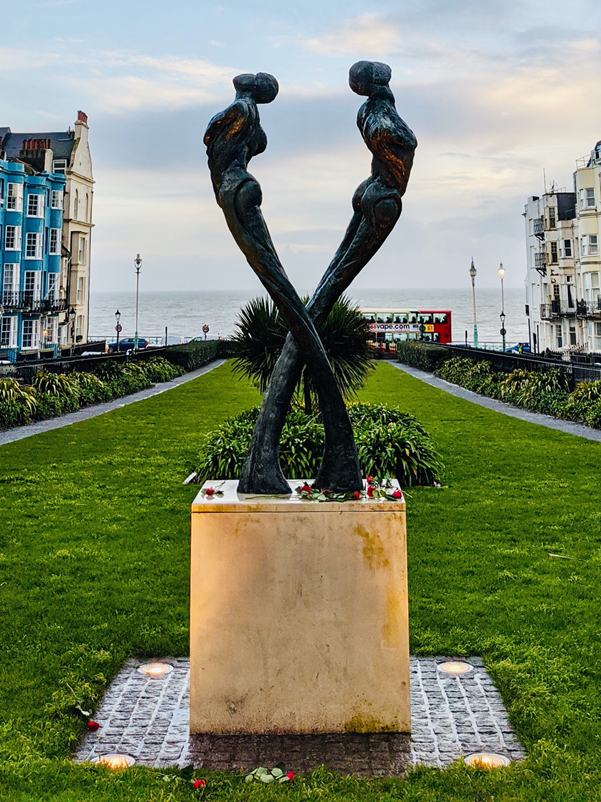
That is however not all. This year as every year we went on a Winter Retreat with a group of young LGBT+ persons to Brighton. The main goals of this are to give the young persons time to relax away from home before exam season starts, take part in fun activities, cook together, live together, and be a community together. This year we also asked our members to lay flowers at the AIDS Memorial statue by Romany Mark Bruce. They found it both touching and meaningful. Through this, our members grow to understand the pillars of our community and its history is one of those pillars. Evaluation of the residential revealed that they all reflected on it as a great activity which shows how important such gestures are in shaping the community of the future. It’s still disappointing that London has no AIDS Memorial yet, but we are abreast with a campaign to build one and fully supportive of it.
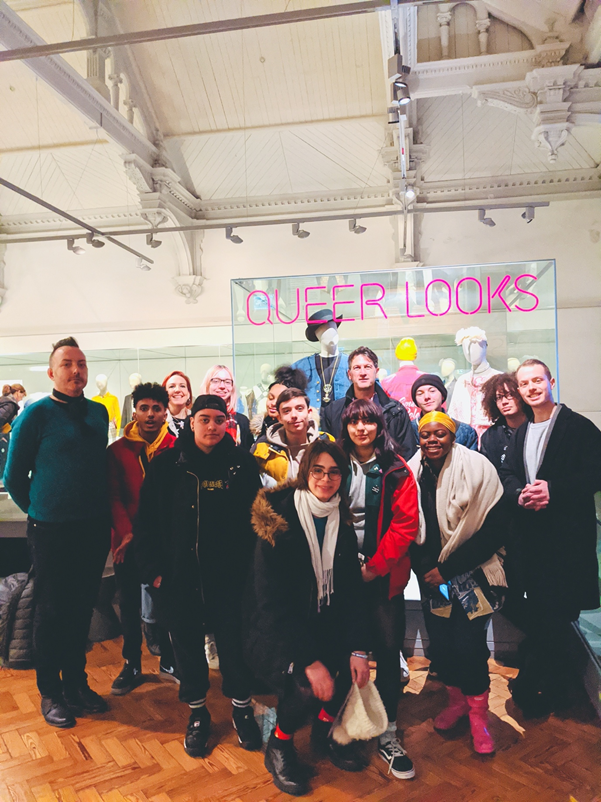
While in Brighton we also went to see the ‘Queer Looks’ exhibition at Brighton Museum. LGBT+ stories and lives were being told through fashion and clothing. They were moving stories from the past, some of which were sadly lost due to the closure of Our Story. This is a worrying example and a lesson that should teach us how critical it is to safeguard our community treasures. Our members listened carefully to our tour guide: Martin Pel, Curator of Fashion and Textiles. It was interesting to hear stories behind the exhibition itself. Young persons were intrigued, so much so that in their free time after the tour was finished they went around the museum and managed to sneak in to have a look at the exhibition of ‘Queer the Pier’ that hasn’t officially opened yet. One could say it was naughty of them to do so, but the curiosity sparked was definitely stronger than any fear of repercussions or being told off and it was a true definition of a victimless crime.
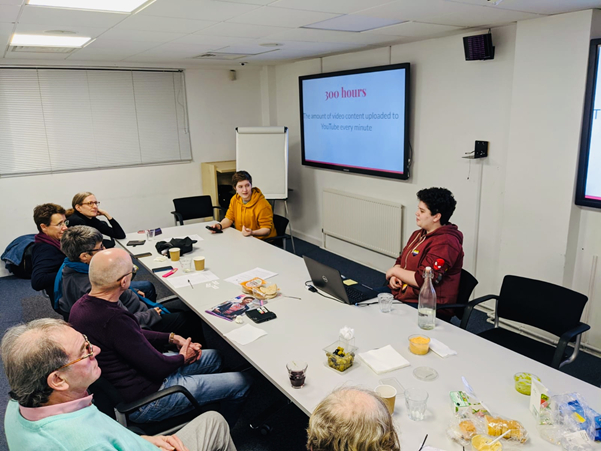
Also in Brighton, we went to see ‘The exponent of breath’ Herstory Month portraits at the Jubilee Library. Our young persons were fascinated by the stories and the narrations that went with them. It’s always so fascinating to watch the transition from not being that interested to intrigued and wanting to find out more…
February also allowed us to deliver another of our social action workshops for older members of our community. Our young persons get prepared to be educators and teach older LGBT+ community members the ins and outs of the internet and social media tricks and traps. On each occasion, the young persons love the interaction, patiently explaining features that they themselves might be taking for granted with patience and kindness. Though not a discussion of history per se, it allows a more constructive intergenerational dialogue and learning. We see this as history in the making if you will.
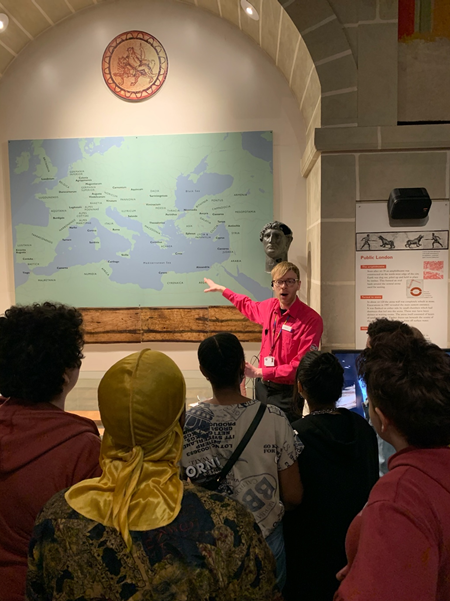
On our return to London, we took our members to the LGBT+ history tour at the Museum of London, many would think that they would have enough by now, but our members attended in numbers making sure they could absorb as much as possible. They loved the vivid stories from love of Hadrian and Antinous through Queer Suffragettes to modern-day Pride movement and Tom Daley’s coming out. It gave our members a wider understanding and interest in the community’s history usualising the experience of being an LGBT+ person.

On the same day as the museum tour, we also hosted our very first Intergenerational Afternoon Tea. Turn out surpassed our wildest dreams with eighteen young persons meeting sixteen older persons. It was lovely to see such interest on both sides. We have never run an event like this before, but having attempted intergenerational approaches before we knew that structure would be key. We divided both ends of the age spectrum equally between three tables and asked them to share within the group their names, gender pronouns and their favourite food. This helped people focus on commonalities before we went into desert island discs mode where each participant had to share a book, luxury item, and a record they would take on a desert island. It was again fascinating to see some similarities. We then paired the younger and older persons and gave them a conversation menu. The idea was that they could choose any starter and main with any dessert question. It gave the structure of the interaction and reduced any possibility of awkwardness. Towards the end our members who were hosting the evening serving teas and coffees as well as those participating all gave their visitors a round of applause. After all on the shoulders of our elders we are standing. Feedback was extremely positive and encouraging, insisting we do it again. This came from both ends, from our members and from older persons. “Truly inspirational!” one of the evaluation forms seemed to scream. We are now going to host it annually.

On the same day as the museum tour, we also hosted our very first Intergenerational Afternoon Tea. Turn out surpassed our wildest dreams with eighteen young persons meeting sixteen older persons. It was lovely to see such interest on both sides. We have never run an event like this before, but having attempted intergenerational approaches before we knew that structure would be key. We divided both ends of the age spectrum equally between three tables and asked them to share within the group their names, gender pronouns and their favourite food. This helped people focus on commonalities before we went into desert island discs mode where each participant had to share a book, luxury item, and a record they would take on a desert island. It was again fascinating to see some similarities. We then paired the younger and older persons and gave them a conversation menu. The idea was that they could choose any starter and main with any dessert question. It gave the structure of the interaction and reduced any possibility of awkwardness. Towards the end our members who were hosting the evening serving teas and coffees as well as those participating all gave their visitors a round of applause. After all on the shoulders of our elders we are standing. Feedback was extremely positive and encouraging, insisting we do it again. This came from both ends, from our members and from older persons. “Truly inspirational!” one of the evaluation forms seemed to scream. We are now going to host it annually.
Our (hi)story continues and we are striving for improvements in everything we do.
Lukasz Konieczka
Executive Director

